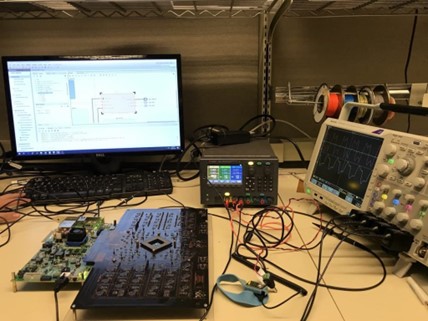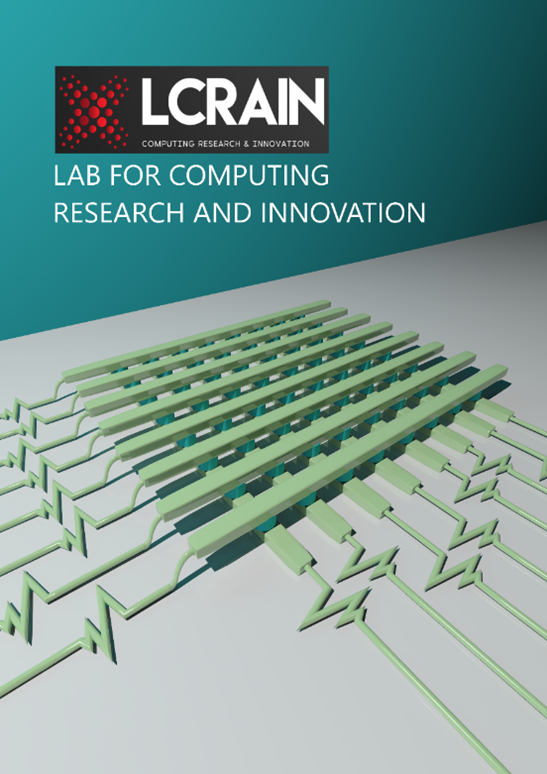Lassonde research is using the human brain as a blueprint for the next generation of computers
Tags:

For years, science-fiction movies and television shows have toyed with the idea of human-like computers; an idea that is becoming more common with rapid advances in science and technology. Researchers have developed systems that imitate the way humans think, function and even sound, but there is one unique approach to computer engineering, called neuromorphic computing that takes the idea of human computers to new heights. Neuromorphic computing aims to develop specialized software and hardware modeled after the human brain, mimicking its biological structure and function to establish computer systems with human intelligence at their core.
With increasing processing power demands that cannot be satisfied by traditional computers, there is an emerging need for alternative, more intelligent computing systems. “By building computing systems that mimic the human brain, we can improve computing efficiency and also extend applications to healthcare. We need to change the way we’re computing,” says Amirali Amirsoleimani, assistant professor in the Electrical Engineering & Computer Science Department at York University’s Lassonde School of Engineering. Focusing on novel computing paradigms, including neuromorphic computing, Professor Amirsoleimani is committed to designing innovative computer architecture and integrated circuits.

Like the human brain, which uses a complex system of neurons and other structures to perform various functions, neuromorphic computing systems use an expansive network of artificial neurons to receive and transmit signals, allowing for humanistic skills such as the ability to learn from and adapt to changing stimuli. These systems also replicate the brain’s ability to perform advanced tasks with minimal energy and remain functional when partially damaged, supporting energy-efficient computing systems that are resilient against component failure.
Aiming to advance this emerging research field, Professor Amirsoleimani is focused on building hardware for neuromorphic computing systems. “The AI side of research is very saturated, but not many people work on the hardware side,” he says. “We want to build hardware to support the design of novel computing systems.”
His work has explored the use and optimization of numerous hardware technologies to support a future, global transition from traditional to neuromorphic computing systems. This includes using emerging technologies to build spiking neural accelerators, which can reduce energy consumption and footprint, as well as increase throughput. Professor Amirsoleimani is also testing crossbar shaped, resistive random-access memory (RRAM)/non-volatile memristive devices to enable in-memory computing and establish new possibilities for the future generation of computing platforms.
In a recent project, Professor Amirsoleimani and his research team proposed a novel system for epileptic seizure detection and prediction. As the underlying mechanism of epilepsy is not entirely understood, experimental methods of treatment require accurate detection and prediction systems. Researchers have explored the use of electroencephalograms (EEG) and human intracranial electroencephalograms (iEEG) to monitor electrical activity in the brain, coupled with machine learning (ML) algorithms to classify seizures; however these methods have proven to be tedious and inconvenient.
To overcome these issues, this project explored the use of a Convolutional Neural Network (CNN) based on in-memory computing (IMC) resistive random-access memory (RRAM) architecture, with analog crossbars. This dual-function architecture allowed for data storage and computation, while analog crossbars performed the most crucial operations with high efficiency and reduced performance delays. Using patient data collected from EEGs and iEEGs, this system effectively detected and predicted epileptic seizures with 97.5 – 99.8% accuracy! These outstanding results lay a strong foundation for future work that aims to improve outcomes for patients with epilepsy.

With promising benefits and applications of these intelligent computing systems, Professor Amirsoleimani continues to work towards his purposeful research goals, while tackling the many obstacles that overwhelm the field of neuromorphic computing. “You have to be very flexible with this research; there is a lot of trial and error involved,” he says. “The world doesn’t even know exactly how the human brain works yet, so it can be difficult to develop computing systems modeled after something that isn’t completely understood.” He also encourages more Lassonde students to get involved in this challenging yet rewarding field; to become a part of purposeful work that will drive solutions to globally pressing issues in both computing and healthcare.
Professor Amirsoleimani’s Lab for Computing Research and Innovation (LCRAIN) is open to interested undergraduate and graduate students looking to change the future of computing. Learn more about LCRAIN and research opportunities available in the lab.